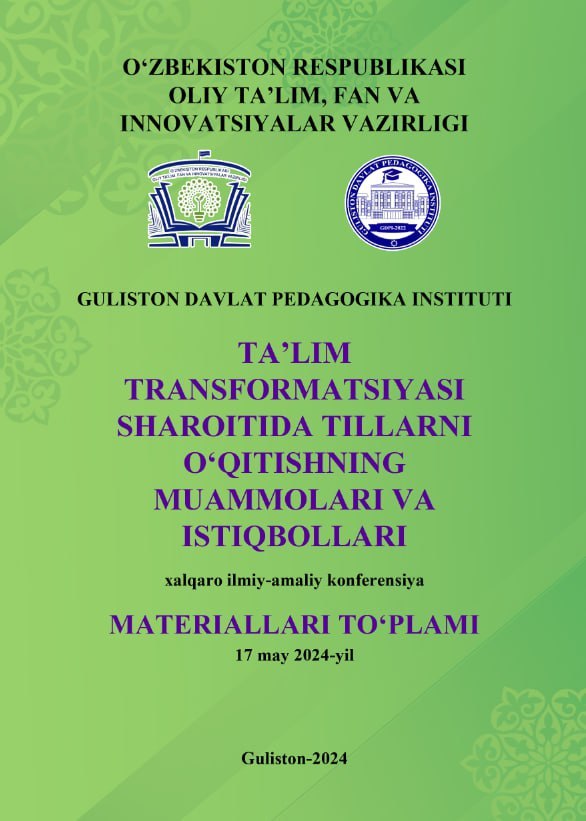DIGITAL MEDIA APPLICATIONS IN LANGUAGE TEACHING: EXPLORING POSITIVE AND NEGATIVE IMPACTS
Keywords:
digital tools, language teaching, learning outcomesAbstract
Integrating digital applications into language teaching has gained significant attention in recent years. This research paper explores digital applications' positive and negative impacts on language teaching. The paper examines various digital tools and platforms commonly used in language education and discusses their effects on learning outcomes, student engagement, teacher facilitation, and classroom dynamics. By critically analyzing existing literature and empirical studies, this paper provides insights into the opportunities and challenges of digital applications in language teaching.
References
Zhao, Z., Wang, X., Ismail, S. M., Hasan, M. K., & Hashemifardnia, A. (2022). Social media and academic success: Impacts of telegram on foreign language motivation, anxiety, and attitude toward learning among EFL learners. Frontiers in Psychology, 13, 996577.
Abbasova, M., & Mammadova, N. (2019). The role of digital technology in English language teaching in Azerbaijan.
Alam, A. (2023). Harnessing the Power of AI to Create Intelligent Tutoring Systems for Enhanced Classroom Experience and Improved Learning Outcomes. In Intelligent Communication Technologies and Virtual Mobile Networks (pp. 571-591). Singapore: Springer Nature Singapore.
Osuji, C. U., & Amadi, J. C. (2020). Global education marketing: using distance learning to export knowledge implications on globalization. Journal of Education and Entrepreneurship, 7(1), 14-25.
Corbett, J. (2022). An intercultural approach to English language teaching (Vol. 36). Multilingual matters.
Ahearn, L. M. (2021). Living language: An introduction to linguistic anthropology. John Wiley & Sons.
Kukulska-Hulme, A., Giri, R. A., Dawadi, S., Devkota, K. R., & Gaved, M. (2023). Languages and technologies in education at and outside of school: Perspectives from young people in low-resource countries in Africa and Asia. Frontiers in Communication, 8, 1081155.
Berns, A., & Reyes Sánchez, S. (2021). A review of virtual reality-based language learning apps.
Lou, N. M., & Noels, K. A. (2019). Promoting growth in foreign and second language education: A research agenda for mindsets in language learning and teaching. System, 86, 102126.
Hockly, N., & Dudeney, G. (2017). Digital learning in 2020. In Digital language learning and teaching (pp. 235-245). Routledge.
Li, P., & Lan, Y. J. (2022). Digital language learning (DLL): Insights from behaviour, cognition, and the brain. Bilingualism: Language and Cognition, 25(3), 361-378.
Abbasova, M., & Mammadova, N. (2019). The role of digital technology in English language teaching in Azerbaijan.
Arshad, S. M. B. M., & Ounissi, A. (2024). Issues EFL teachers encounter in teaching writing online to intermediate level or IELTS students. Наука и технология в современном мире, 3(1), 32-36.
Arshad, S. M. B. M. (2023). Effective Techniques for EFL Teachers and Learners to Increase Beginner’s Level Vocabulary. Science and innovation, 2(B12), 19-27
Arshad, S. (2024). Language bridges in agriculture: exploring the vital role of english proficiency in connecting diverse agricultural communities and practices. Science and innovation, 3(Special Issue 21), 27-32.


